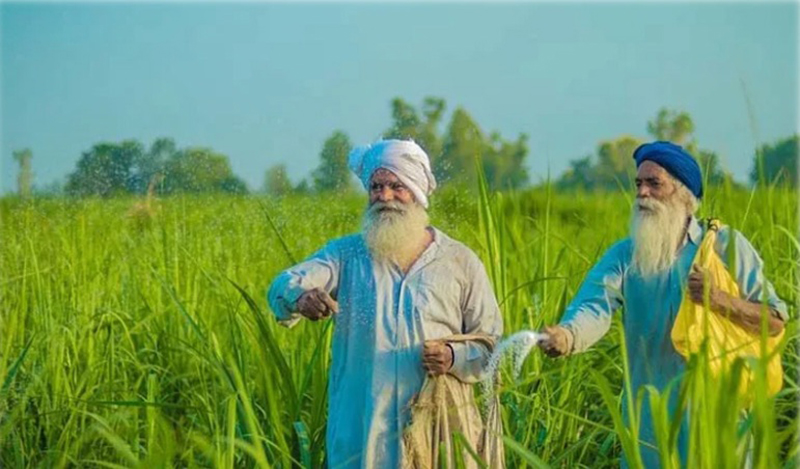 Punjab
Punjab Revolutionizing agriculture: Agromet advisory bulletin boosts crop productivity and climate resilience
In a groundbreaking revelation, farmers in Punjab adopting the Agromet Advisory Bulletin (AAB) issued by the India Meteorological Department (IMD) have witnessed a substantial increase in the productivity of rice and wheat crops.
This not only translates to economic gains for the farmers but also contributes to a reduction in environmental risks, according to a recent study conducted by experts from the Department of Climate Change and Agricultural Meteorology at Punjab Agricultural University, Ludhiana.
The study, titled “Mitigation and Risk Management of Climate Change in Crop Cultivation Through the Adoption of Agromet Advisory Bulletin in NICRA-Adopted Villages in Punjab,” focused on three villages in Fatehgarh Sahib and Rupnagar districts. The survey encompassed 110 farmers, with 70 categorized as marginal or small farmers and 40 as medium farmers, all of whom embraced the insights provided by the AAB.
The key findings of the study showcase a remarkable improvement in crop productivity for adopters of the AAB. Rice productivity increased by 2.25-3.75 quintals per hectare, while wheat productivity saw a boost of 1.75-4.50 quintals per hectare. This leap was attributed to adopting climate-smart practices such as scheduling land preparation, timely sowing, and precision pesticide application based on the predicted weather for the next four to five days.
Financially, farmers using the AAB reported a significant rise in income. Rice cultivators saw an increase of Rs 4,100-7,000 per hectare, while wheat growers experienced a surge of Rs 3,200-9,200 per hectare. The AAB, relying on eight climatic parameters, offers district and block-level advisories under the All India Coordinated Research Project on Agrometeorology-National Innovations in Climate Resilient Agriculture.
A crucial aspect highlighted in the study is the vulnerability of the agricultural sector to weather aberrations, considering its substantial contribution of 18 percent to India’s GDP and 25 percent to Punjab’s GDP. By utilizing the AAB, farmers can proactively manage both agronomic and weather-related inputs, mitigating losses caused by unpredictable weather conditions.
The study showcased that 65-93 percent of farmers benefited from managing biotic stresses, 65-85 percent from improved irrigation management, 75-78 percent through adjusted sowing practices, and 62-65 percent by optimizing nutrient management.
In terms of economic expenditure, AAB adopters spent Rs 690-3,750 per hectare on rice and Rs 320-1,670 per hectare on wheat, significantly lower than non-adopters. The study emphasizes the cost-effectiveness of adopting scientific practices, particularly as inputs such as seeds, fertilizers, irrigation water, and biotic stress management become more expensive.
Perhaps most impressively, the study estimates a reduction of 29.1 metric tonnes of carbon dioxide emissions from 211.3 hectares of rice area, showcasing the environmental benefits of adopting climate-smart agricultural practices facilitated by the Agromet Advisory Bulletin.
In essence, the AAB has emerged as a game-changer for Punjab’s farmers, providing them with timely and accurate information to navigate the challenges posed by climate variability. As agriculture continues to be a cornerstone of India’s economy, the integration of such innovative tools promises a more resilient and sustainable future for the nation’s farming communities.
(Image and text courtesy: Khalsavox.com)
Support Our Journalism
We cannot do without you.. your contribution supports unbiased journalism
IBNS is not driven by any ism- not wokeism, not racism, not skewed secularism, not hyper right-wing or left liberal ideals, nor by any hardline religious beliefs or hyper nationalism. We want to serve you good old objective news, as they are. We do not judge or preach. We let people decide for themselves. We only try to present factual and well-sourced news.







